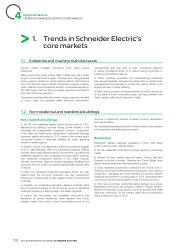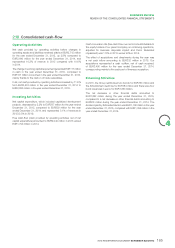APC 2015 Annual Report Download - page 180
Download and view the complete annual report
Please find page 180 of the 2015 APC annual report below. You can navigate through the pages in the report by either clicking on the pages listed below, or by using the keyword search tool below to find specific information within the annual report.-
 1
1 -
 2
2 -
 3
3 -
 4
4 -
 5
5 -
 6
6 -
 7
7 -
 8
8 -
 9
9 -
 10
10 -
 11
11 -
 12
12 -
 13
13 -
 14
14 -
 15
15 -
 16
16 -
 17
17 -
 18
18 -
 19
19 -
 20
20 -
 21
21 -
 22
22 -
 23
23 -
 24
24 -
 25
25 -
 26
26 -
 27
27 -
 28
28 -
 29
29 -
 30
30 -
 31
31 -
 32
32 -
 33
33 -
 34
34 -
 35
35 -
 36
36 -
 37
37 -
 38
38 -
 39
39 -
 40
40 -
 41
41 -
 42
42 -
 43
43 -
 44
44 -
 45
45 -
 46
46 -
 47
47 -
 48
48 -
 49
49 -
 50
50 -
 51
51 -
 52
52 -
 53
53 -
 54
54 -
 55
55 -
 56
56 -
 57
57 -
 58
58 -
 59
59 -
 60
60 -
 61
61 -
 62
62 -
 63
63 -
 64
64 -
 65
65 -
 66
66 -
 67
67 -
 68
68 -
 69
69 -
 70
70 -
 71
71 -
 72
72 -
 73
73 -
 74
74 -
 75
75 -
 76
76 -
 77
77 -
 78
78 -
 79
79 -
 80
80 -
 81
81 -
 82
82 -
 83
83 -
 84
84 -
 85
85 -
 86
86 -
 87
87 -
 88
88 -
 89
89 -
 90
90 -
 91
91 -
 92
92 -
 93
93 -
 94
94 -
 95
95 -
 96
96 -
 97
97 -
 98
98 -
 99
99 -
 100
100 -
 101
101 -
 102
102 -
 103
103 -
 104
104 -
 105
105 -
 106
106 -
 107
107 -
 108
108 -
 109
109 -
 110
110 -
 111
111 -
 112
112 -
 113
113 -
 114
114 -
 115
115 -
 116
116 -
 117
117 -
 118
118 -
 119
119 -
 120
120 -
 121
121 -
 122
122 -
 123
123 -
 124
124 -
 125
125 -
 126
126 -
 127
127 -
 128
128 -
 129
129 -
 130
130 -
 131
131 -
 132
132 -
 133
133 -
 134
134 -
 135
135 -
 136
136 -
 137
137 -
 138
138 -
 139
139 -
 140
140 -
 141
141 -
 142
142 -
 143
143 -
 144
144 -
 145
145 -
 146
146 -
 147
147 -
 148
148 -
 149
149 -
 150
150 -
 151
151 -
 152
152 -
 153
153 -
 154
154 -
 155
155 -
 156
156 -
 157
157 -
 158
158 -
 159
159 -
 160
160 -
 161
161 -
 162
162 -
 163
163 -
 164
164 -
 165
165 -
 166
166 -
 167
167 -
 168
168 -
 169
169 -
 170
170 -
 171
171 -
 172
172 -
 173
173 -
 174
174 -
 175
175 -
 176
176 -
 177
177 -
 178
178 -
 179
179 -
 180
180 -
 181
181 -
 182
182 -
 183
183 -
 184
184 -
 185
185 -
 186
186 -
 187
187 -
 188
188 -
 189
189 -
 190
190 -
 191
191 -
 192
192 -
 193
193 -
 194
194 -
 195
195 -
 196
196 -
 197
197 -
 198
198 -
 199
199 -
 200
200 -
 201
201 -
 202
202 -
 203
203 -
 204
204 -
 205
205 -
 206
206 -
 207
207 -
 208
208 -
 209
209 -
 210
210 -
 211
211 -
 212
212 -
 213
213 -
 214
214 -
 215
215 -
 216
216 -
 217
217 -
 218
218 -
 219
219 -
 220
220 -
 221
221 -
 222
222 -
 223
223 -
 224
224 -
 225
225 -
 226
226 -
 227
227 -
 228
228 -
 229
229 -
 230
230 -
 231
231 -
 232
232 -
 233
233 -
 234
234 -
 235
235 -
 236
236 -
 237
237 -
 238
238 -
 239
239 -
 240
240 -
 241
241 -
 242
242 -
 243
243 -
 244
244 -
 245
245 -
 246
246 -
 247
247 -
 248
248 -
 249
249 -
 250
250 -
 251
251 -
 252
252 -
 253
253 -
 254
254 -
 255
255 -
 256
256 -
 257
257 -
 258
258 -
 259
259 -
 260
260 -
 261
261 -
 262
262 -
 263
263 -
 264
264 -
 265
265 -
 266
266 -
 267
267 -
 268
268 -
 269
269 -
 270
270 -
 271
271 -
 272
272 -
 273
273 -
 274
274 -
 275
275 -
 276
276 -
 277
277 -
 278
278 -
 279
279 -
 280
280 -
 281
281 -
 282
282 -
 283
283 -
 284
284 -
 285
285 -
 286
286 -
 287
287 -
 288
288 -
 289
289 -
 290
290 -
 291
291 -
 292
292 -
 293
293 -
 294
294 -
 295
295 -
 296
296 -
 297
297 -
 298
298 -
 299
299 -
 300
300 -
 301
301 -
 302
302 -
 303
303 -
 304
304 -
 305
305 -
 306
306 -
 307
307 -
 308
308 -
 309
309 -
 310
310 -
 311
311 -
 312
312 -
 313
313 -
 314
314 -
 315
315 -
 316
316 -
 317
317 -
 318
318 -
 319
319 -
 320
320 -
 321
321 -
 322
322 -
 323
323 -
 324
324 -
 325
325 -
 326
326 -
 327
327 -
 328
328 -
 329
329 -
 330
330 -
 331
331 -
 332
332
 |
 |

2015 REGISTRATION DOCUMENT SCHNEIDER ELECTRIC178
BUSINESS REVIEW
4TRENDS IN SCHNEIDER ELECTRIC’S COREMARKETS
>
1. Trends in Schneider Electric’s
coremarkets
1.1 Industries and machine manufacturers
Industry market struggled throughout 2015, facing severe
headwinds:
Falling commodity prices (mainly O&G, metals) have led a sharp
drop in commodity sectors capex. This step down has generated
strong negative impacts on global industry market: O&G sector is
one of the fi rst end-users in metals, construction engines, turbines,
water treatment and professional services. Companies exposed to
this O&G supply chain cut their own capex, opex and inventories to
align them with lower demand.
Companies which benefi ted from lower energy costs were reluctant
to invest, given the generally weak economic environment,
overcapacities and high level of debt. Companies preferred
to restore the balance sheet, or to reduce selling prices (due to
increasing competitive pressure).
In China, industrial production and manufacturing investment
have slowed markedly, depressed by deterioration in global trade,
overcapacities and decrease in construction sector (which is the
largest end- user of heavy industry).
In other new economies, industrial markets recorded a slowdown
on the back of lower commodity prices, declining demand from
China, capital outfl ow and a high level of debt.
1.2 Non residential and residential buildings
Non residential buildings
In the US, non residential market growth slowed down in 2015.
Manufacturing buildings reported strong growth thanks to the
chemicals and transportation equipment sectors. Construction
in the offi ce and retail sectors decelerated. Institutional buildings
segments slightly rebounded in 2015, driven by the private sector
component (mainly in healthcare facilities) as public spending
remained under pressure.
In Western Europe, non residential construction remained sluggish
in 2015. Manufacturing, offi ce and commercial buildings suffered
from the deteriorated global economic environment. Education and
healthcare segments were constrained by public-sector austerity.
Non residential construction declined in two major markets,
Germany and France. Spain and Ireland increased, benefi ting from
economic reforms. In Italy, the market stabilized after several years
of decline .
In China, non residential construction decreased further. The main
reasons were the economic slowdown and new consumption
patterns (e-commerce has a major negative impact on commercial
buildings).
In Australia, non residential construction declined. Industrial, offi ce
and commercial buildings all fall as well as social & institutional
buildings (marked by a sharp plunge in the Health segment).
In several new economies, non residential construction was
hampered by several headwinds: lower demand from China,
negative impact from lower oil and commodities prices on the
revenues of commodity exporter countries, currency depreciation
and capital outfl ow.
Non residential activity accelerated in in India thanks to improvement
in the regulatory and fi nancing environment.
Residential
Residential markets marginally decreased in 2015, with varied
positions among major regional blocks.
In the US, residential construction increase, driven by multi-family
market.
In Western Europe, market improved gently. France, Italy and
Denmark recorded a decline. Germany and Great Britain grew
slightly whereas Ireland and the Netherlands surged.
In China, residential construction continued to fall. At end of 2013,
China’s property sector had reached a turning point, due to strong
construction oversupply and lower demand for property. Despite
a gradual improvement in housing sales in 2015, developers have
continued to reduce housing starts in order to reduce inventory.
In other new economies, residential market declined as a whole.
Residential construction has dropped, notably in Russia, Ukraine,
Brazil and Venezuela, hit by gloomy economic situation and weak
consumer confi dence. On the contrary, Asian new economies and
Africa continued to grow in 2015.
